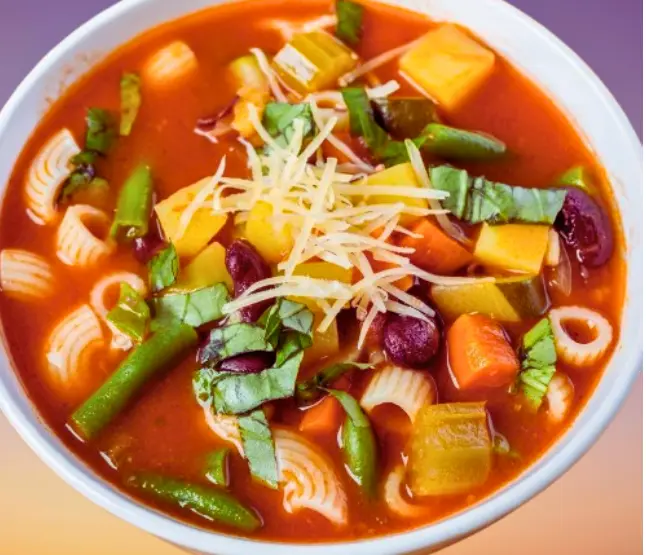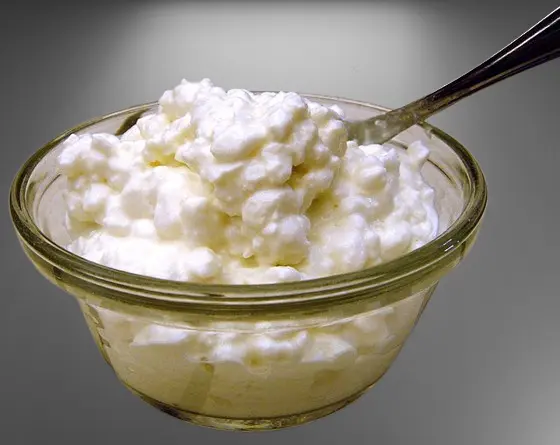10 Common Foods Help In Low Blood Pressure Naturally

Low blood pressure, which is also called hypotension, can make us feel dizzy, weak, and faint, and that can make our daily tasks difficult. So, it’s important to keep our blood pressure healthy, by eating certain healthy food which is easily available.

Here we will describe ten natural foods that can help you to raise your blood pressure and keep it steady. These foods are easy to find and add to your meals. It can help you manage your blood pressure and feel more energetic.
1. Salt
In every home salt must present in our kitchen and this Salt helps raise blood pressure by holding more water in your body, which increases blood volume. For those with low blood pressure, adding a bit more salt to their diet can help and provide a quick and effective boost.
Simple ways to increase salt intake include adding a bit more salt to meals, eating salty snacks like pretzels or salted nuts, and drinking broths. However, it’s important to use salt in moderation since too much can cause high blood pressure and heart problems.
Precaution:-
Try to avoid salt in raw form in your diet. Add salt in your food at the time of boiling like when water boils in vegetables , pulse etc.. . If it is necessary to take salt in raw form then take in as least as possible. You can use other salt in raw form like Rock salt , Black salt in your diet .
Always consult with a healthcare professional before making significant changes to your salt intake.
2. Coffee and Tea
Coffee and tea, particularly those containing caffeine, can temporarily raise blood pressure. Caffeine is a stimulant that helps in raising blood pressure because it makes blood vessels narrower. This effect is generally stronger in people who aren’t used to having caffeine.

If you have low blood pressure, drinking a cup of coffee or tea in the morning can help you feel more awake and balanced. But be careful not to have too much, as too much caffeine can cause problems like anxiety, trouble sleeping, and a faster heart rate.
3. Foods Rich in Vitamin B12
Vitamin B12 used in making healthy red blood cells, which are important for good blood pressure. If your body contains low vitamin B12 can lead to anemia, which can cause low blood pressure.
Eating foods with vitamin B12, like eggs, dairy, meat, and fortified cereals, can naturally raise your blood pressure. If we add these foods in our diet then it can help us get enough vitamin B12 for healthy blood pressure.
Here is a list of foods that are good sources of vitamin B12:
- Eggs
- Dairy products (such as milk, cheese, and yogurt)
- Fortified cereals
- Fortified plant-based milk (such as soy, almond, or oat milk)
- Fortified nutritional yeast
- Fortified meat substitutes (such as veggie burgers or tofu)
- Shellfish (such as clams, mussels, and crab)
- Fish (such as salmon, trout, and tuna)
4. Beetroot juice
Beetroot juice improve blood flow and increase blood pressure. It has nitrates that turn into nitric oxide in the body. Nitric oxide helps widen blood vessels, improve circulation, and raise blood pressure.

For people with low blood pressure, drinking beetroot juice can help manage it naturally. Drinking a glass of beetroot juice daily can help manage low blood pressure effectively. But it’s important to drink it in moderation. Too much can cause other health problems.
5. Almonds and milk
Almonds and milk is good food which helps in low blood pressure. Almonds have healthy fats, protein, and magnesium, which improve blood flow and heart health. Milk provides calcium and vitamin D, which keep blood vessels healthy and regulate blood pressure.
A simple and effective way to use almonds and milk is to soak a handful of almonds overnight, then blend them into a smooth paste in the morning. Mix this paste with a glass of warm milk and drink it daily.
This combination can raise your blood pressure and give you a nutritious start to your day. Adding almonds and milk to your diet can naturally help manage low blood pressure.
6. Salty broth
Salty broth is a simple, flavorful liquid made by simmering water or stock with added salt and sometimes other ingredients like vegetables, herbs, and spices. Salty broth can be a quick and easy way to raise low blood pressure. The salt in the broth helps retain water in the body, increasing blood volume and blood pressure.

How to Prepare Salty Broth for Low Blood Pressure:-
Preparing salty broth is simple and can be done with basic ingredients. Here’s a quick recipe:
Ingredients:
A. 4 cups of water or chicken/vegetable stock
B. 1-2 teaspoons of salt (adjust to taste)
C. Optional: vegetables (like carrots, celery, and onions), herbs (like parsley or thyme), and spices (like black pepper or garlic powder) for added flavorInstructions:
1. Heat the Liquid: Pour the water or stock into a pot and bring it to a boil.
2. Add Salt: Stir in 1-2 teaspoons of salt. Taste and adjust as needed.
3. Optional Flavoring: If using, add chopped vegetables, herbs, and spices to the pot. Let them simmer for about 15-20 minutes to infuse the broth with flavor.
4. Strain (if needed): If you added vegetables and herbs, strain the broth to remove the solids before serving.
5. Serve: Pour the hot, salty broth into a cup and sip it slowly.Precautions:-
Drinking salty broth can provide immediate relief from symptoms like dizziness and fatigue caused by low blood pressure. This can be especially helpful in the morning or whenever you feel your blood pressure dropping. However, it’s important not to consume too much salt, as it can lead to other health problems like high blood pressure and heart disease.
7. Cottage Cheese
Cottage cheese is a fresh cheese made from cow’s milk curds. It has a mild taste and a creamy, lumpy texture. You can eat it plain, with fruits or vegetables, or as a topping for dishes. It is made from the curds of cow’s milk and is often sold in small curd or large curd varieties.

How Cottage Cheese Helps with Low Blood Pressure :-
Cottage cheese helps with low blood pressure because it has sodium, which increases blood volume and pressure. It also provides protein, calcium, and vitamin B12, which support overall health .
Adding cottage cheese to your diet can help manage low blood pressure easily and deliciously. You can eat it plain, mix it with fruits or vegetables, or use it as a topping for salads and snacks. However, since it contains salt, it’s important to eat it in moderation to avoid health problems from too much sodium.
8. Water
Drinking water is important to keep your blood pressure healthy. Not drinking enough water can cause your blood pressure to drop, so it’s important to stay hydrated, especially if you have low blood pressure.
Drinking more water can stop you from getting dehydrated and keep your blood volume healthy, which helps keep your blood pressure stable. To use water for low blood pressure, simply drink an adequate amount throughout the day. Aim for at least eight 8-ounce glasses of water per day, and more if you are in a hot climate or engaging in physical activity.
9. Vitamin B9
Vitamin B9, is also known as Folate is another important nutrient for blood pressure. Low levels of folate can lead to a type of anemia called megaloblastic anemia, which can cause symptoms like fatigue, weakness, and low blood pressure.
Eating foods rich in folate, like leafy greens, beans, lentils, and citrus fruits, can help make healthy red blood cells and keep your blood pressure normal.
10. Salty Snacks
Snacks like pretzels, salted nuts, or crackers can be a good way to increase salt intake.
Salty Snacks Available in the Market:-
- Potato Chips: Thinly sliced potatoes fried or baked and seasoned with salt.
- Pretzels: Baked bread snacks twisted into a knot shape and sprinkled with salt.
- Salted Nuts: Various nuts such as peanuts, cashews, or almonds roasted and salted.
- Popcorn: Popped corn kernels seasoned with salt and butter.
- Crackers: Thin, crispy biscuits often salted and eaten as a snack.
- Cheese Puffs: Puffed corn snacks flavored with cheese and salt.
- Corn Chips: Fried or baked chips made from cornmeal and seasoned with salt.
- Jerky: Dried meat strips often seasoned with salt and other spices.
- Salty Snack Mixes: Assorted snacks like pretzels, nuts, and crackers mixed together and often salted.
- Salty Biscuits: Savory biscuits or crackers with a salty flavor.
Some Gentle Exercises we can do in Low Blood Pressure:-
Walking: A brisk walk can help improve circulation without putting too much strain on your body.
Swimming: Swimming is a low-impact exercise that can help improve cardiovascular health and circulation.
Yoga: Gentle yoga poses, such as child’s pose, cat-cow stretch, and legs up the wall, can help improve circulation and relax the body.
Tai Chi: This gentle form of martial arts can help improve balance, flexibility, and circulation.
Cycling: A stationary bike or gentle cycling outdoors can help improve cardiovascular health and circulation.
Stretching: Simple stretches can help improve flexibility and circulation, such as neck stretches, shoulder rolls, and calf stretches.
Things to Avoid with Low Blood Pressure:-
- Avoid Standing for Long Periods: Prolonged standing can cause blood to pool in your legs, leading to a drop in blood pressure.
- Avoid Sudden Movements: Getting up too quickly from a lying or sitting position can cause a sudden drop in blood pressure. Move slowly and steadily.
- Limit Alcohol: Alcohol can lower blood pressure, so it’s best to drink in moderation or avoid it altogether.
- Avoid Hot Showers or Baths: Hot water can cause blood vessels to dilate, leading to a drop in blood pressure. Opt for warm or lukewarm water instead.
- Avoid Heavy Meals: Large meals can cause a temporary drop in blood pressure, so it’s better to eat smaller, more frequent meals.
- Limit Caffeine: While a small amount of caffeine can temporarily raise blood pressure, excessive consumption can lead to dehydration, which can lower blood pressure.
- Avoid Excessive Heat: Saunas, hot tubs, and hot weather can cause blood vessels to dilate and lead to a drop in blood pressure.
- Avoid Dehydration: Not drinking enough fluids can lower blood pressure, so it’s important to stay hydrated.
- Avoid Crossing Your Legs When Sitting: Crossing your legs can restrict blood flow and contribute to low blood pressure.
- Avoid Heavy Lifting: Straining while lifting heavy objects can cause a sudden drop in blood pressure. If you need to lift something heavy, do so carefully and with proper form.
Conclusion
To manage low blood pressure, add more salt and water to your diet, eat smaller meals more often, and avoid too much alcohol and hot environments. Gentle exercises like walking, swimming, and yoga can help with circulation. Be careful with sudden movements, standing for too long, and lifting heavy things.
Desclaimer:- The information provided in this article is for educational purposes and is not intended as medical advice. It is important to consult with a healthcare professional before making any changes to your diet or lifestyle, especially if you have any underlying health conditions. pls visit our disclaimer page.











